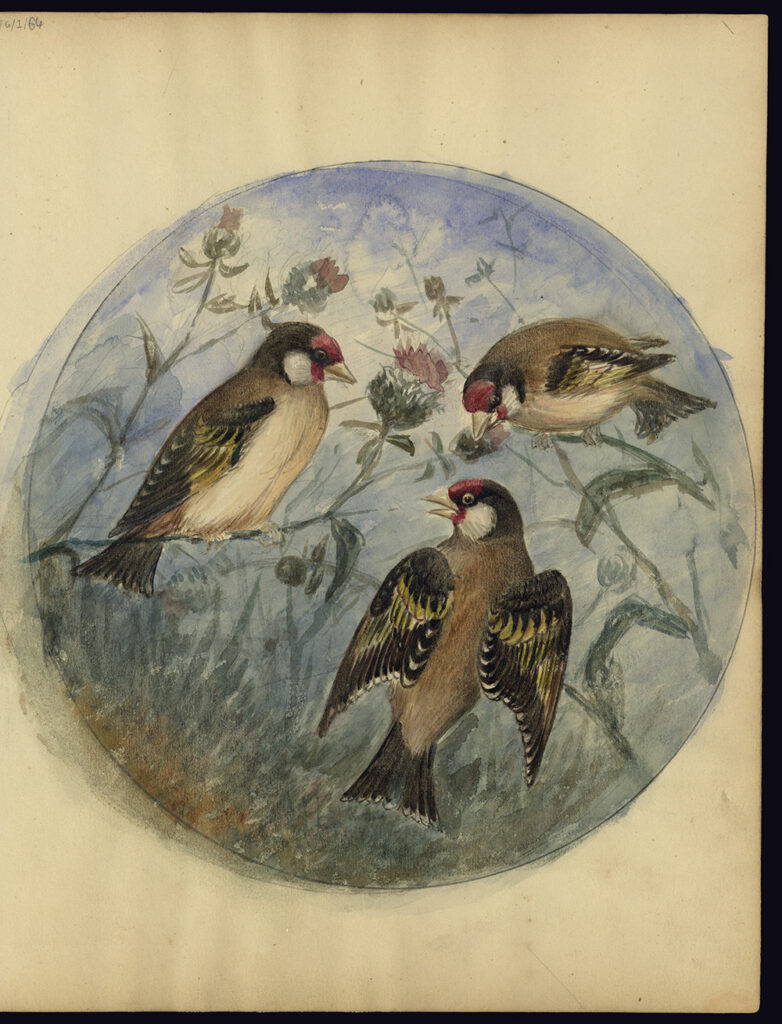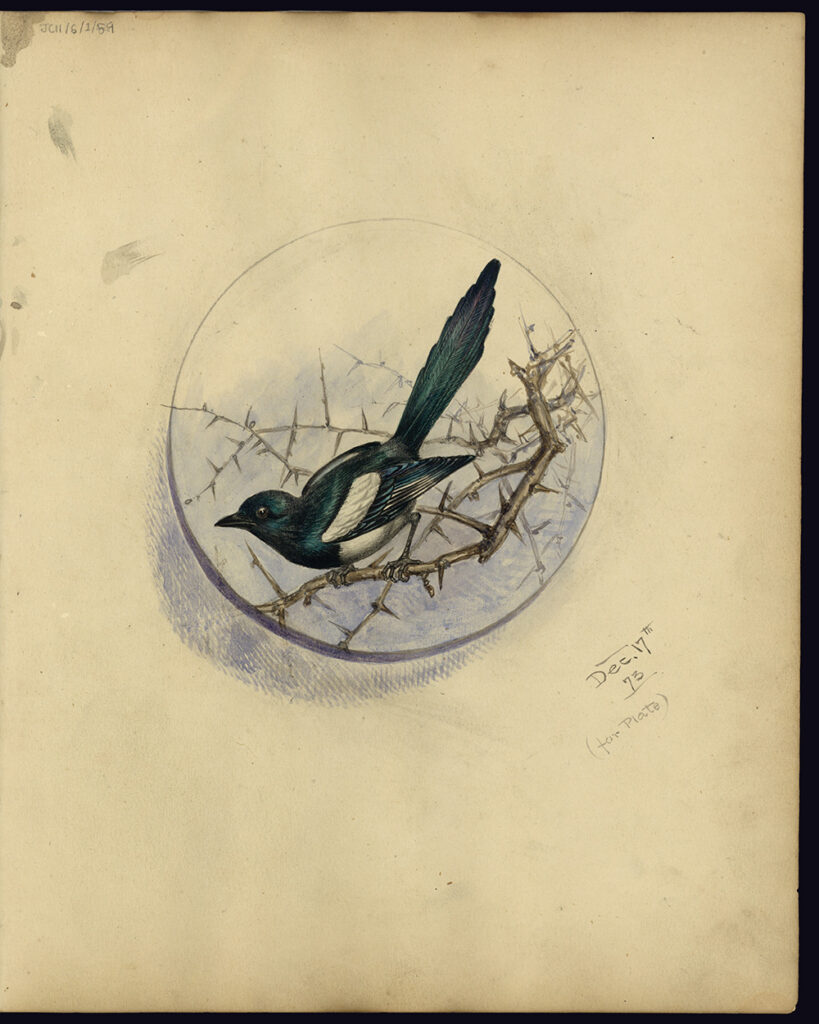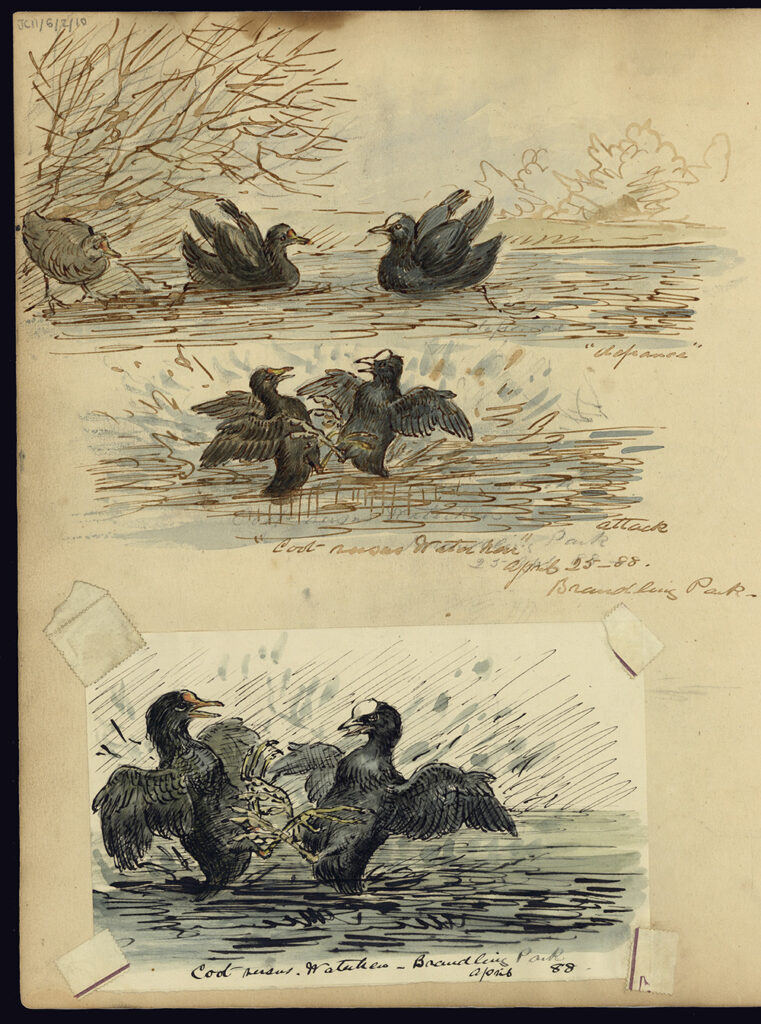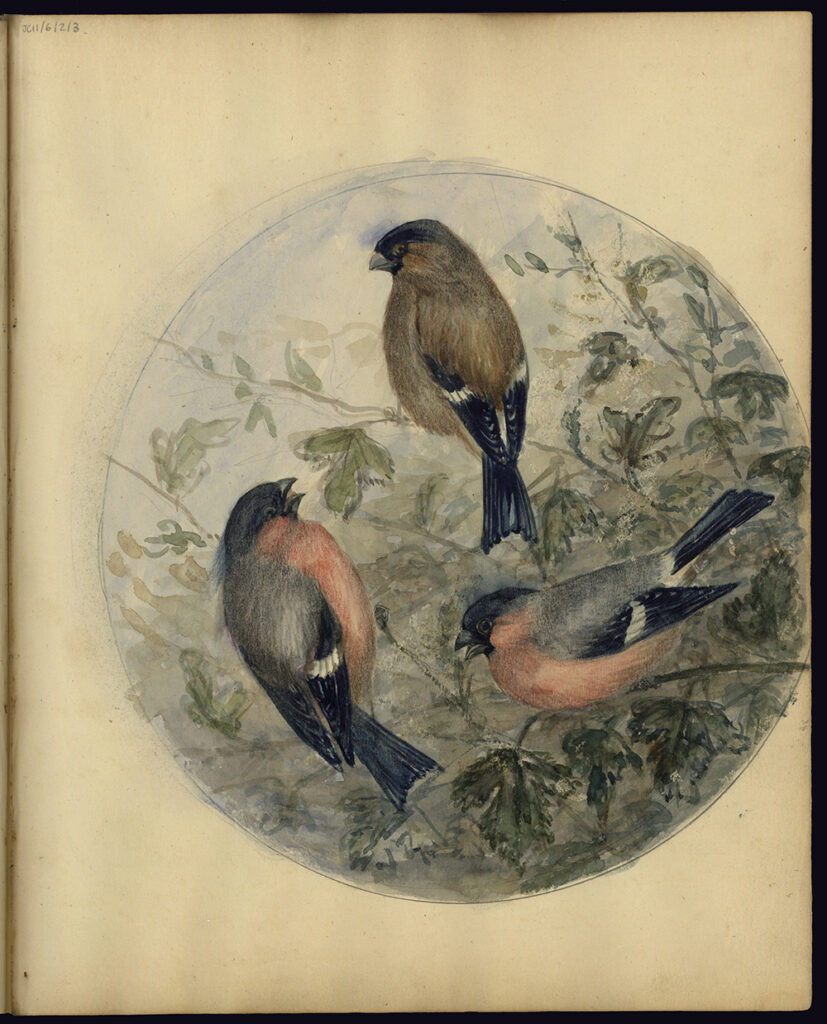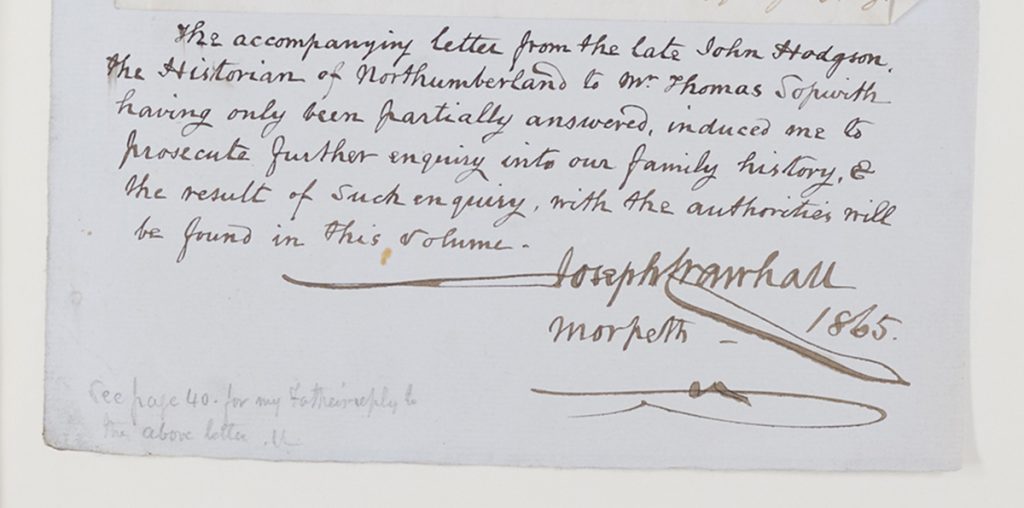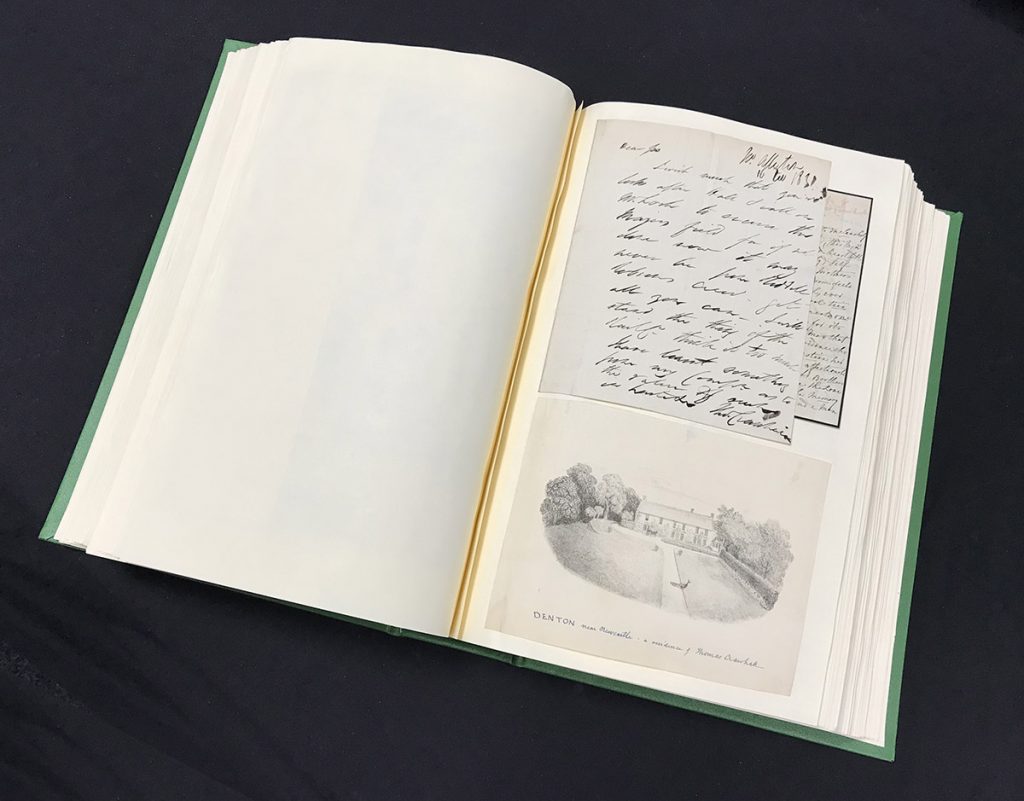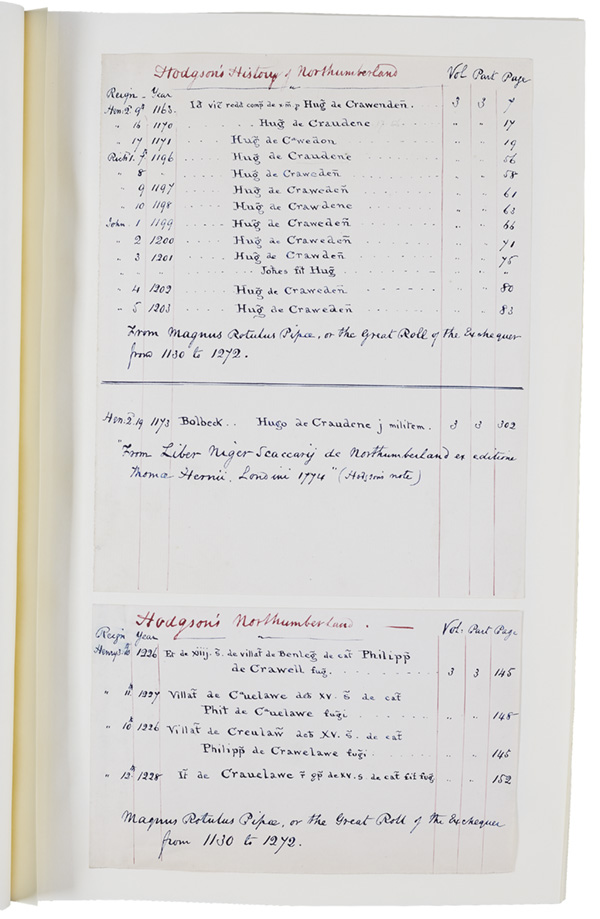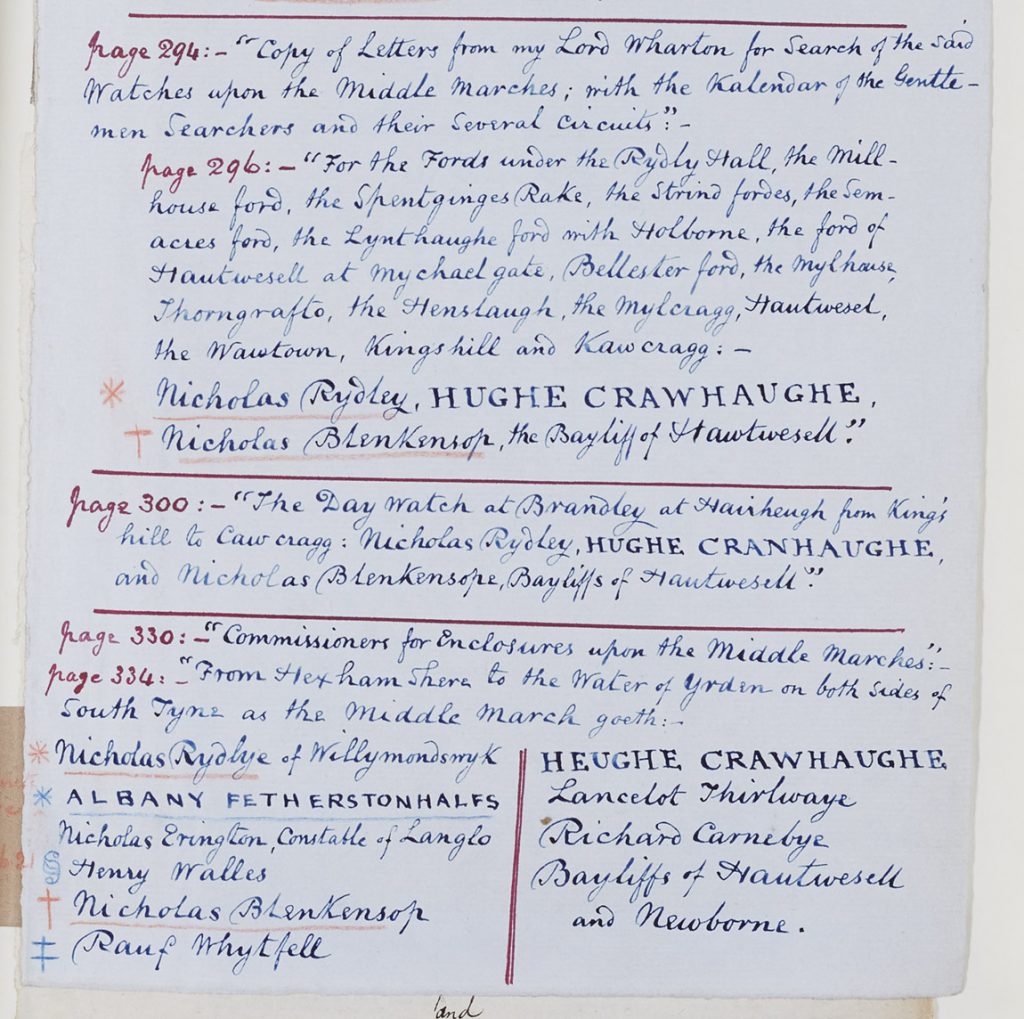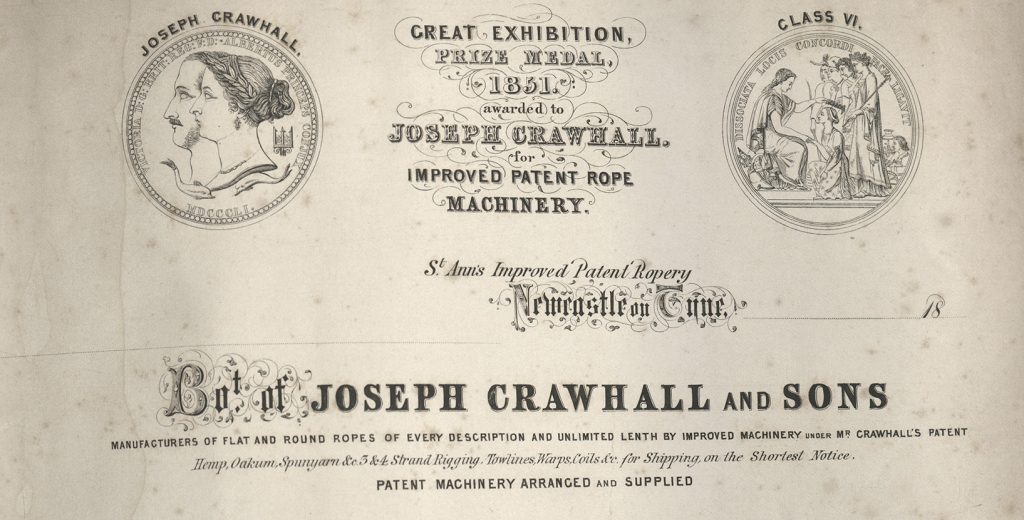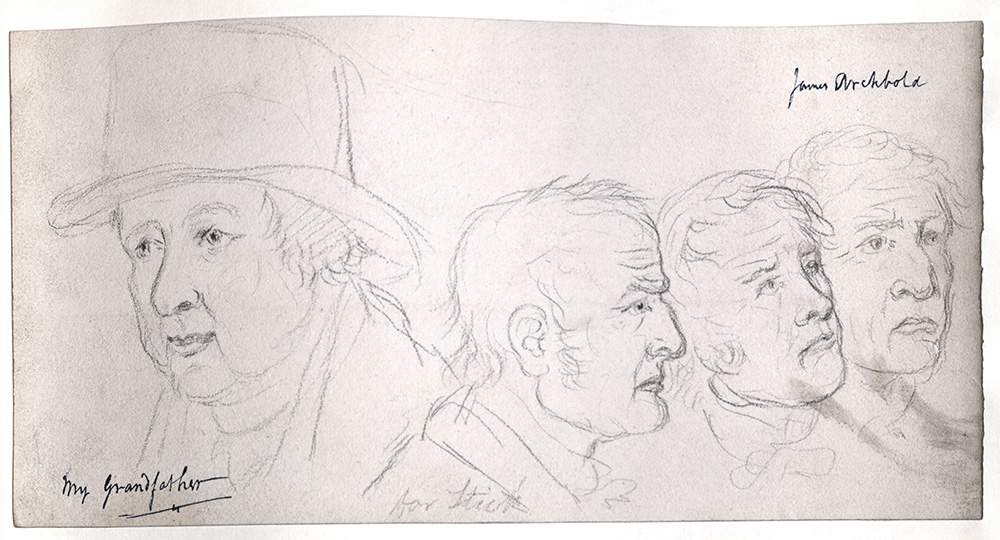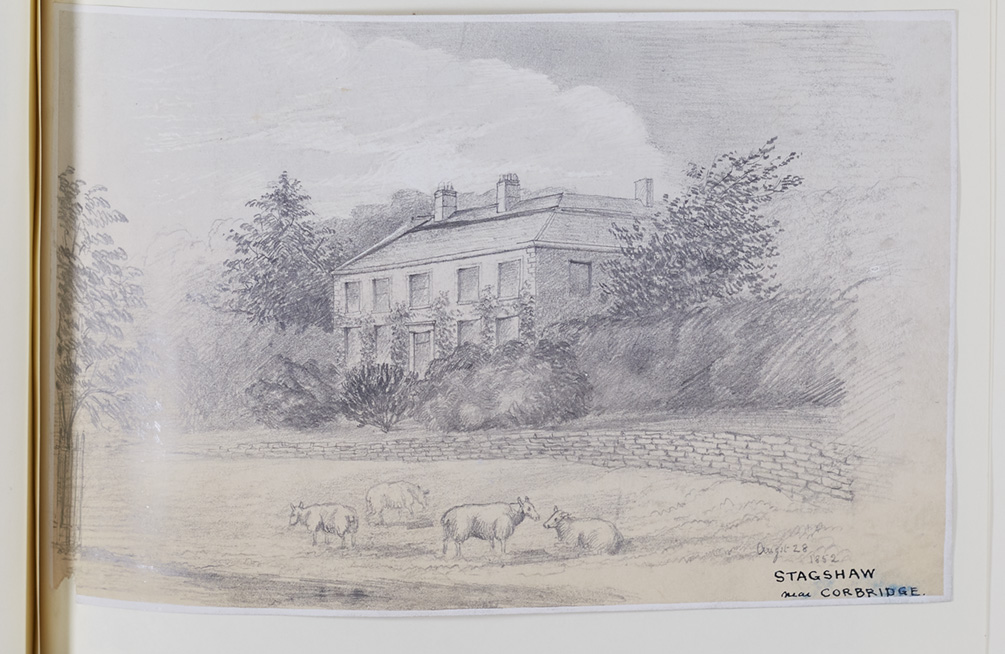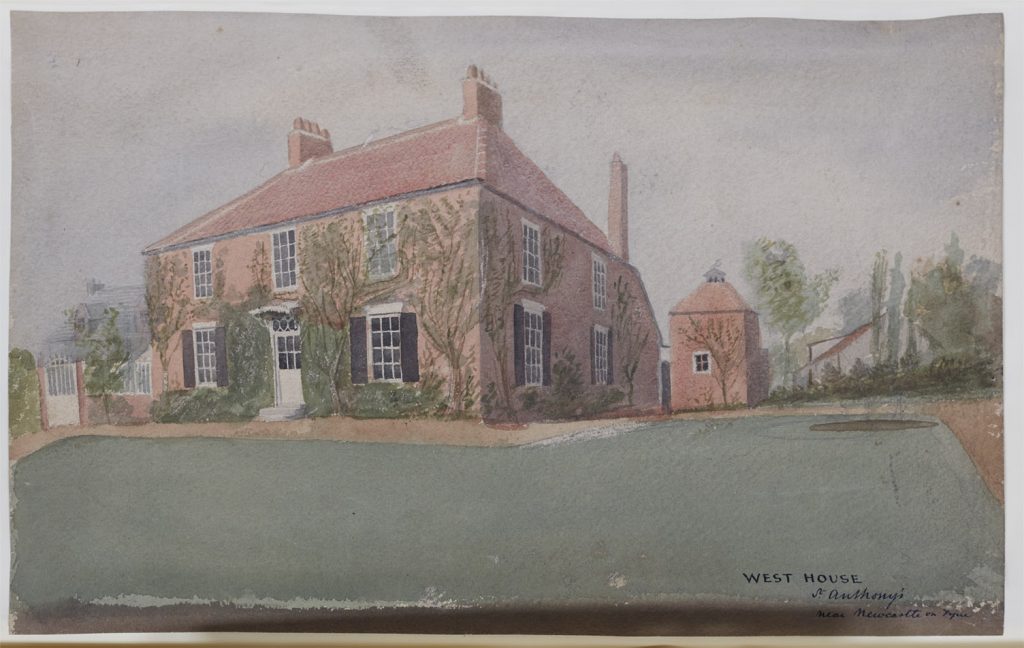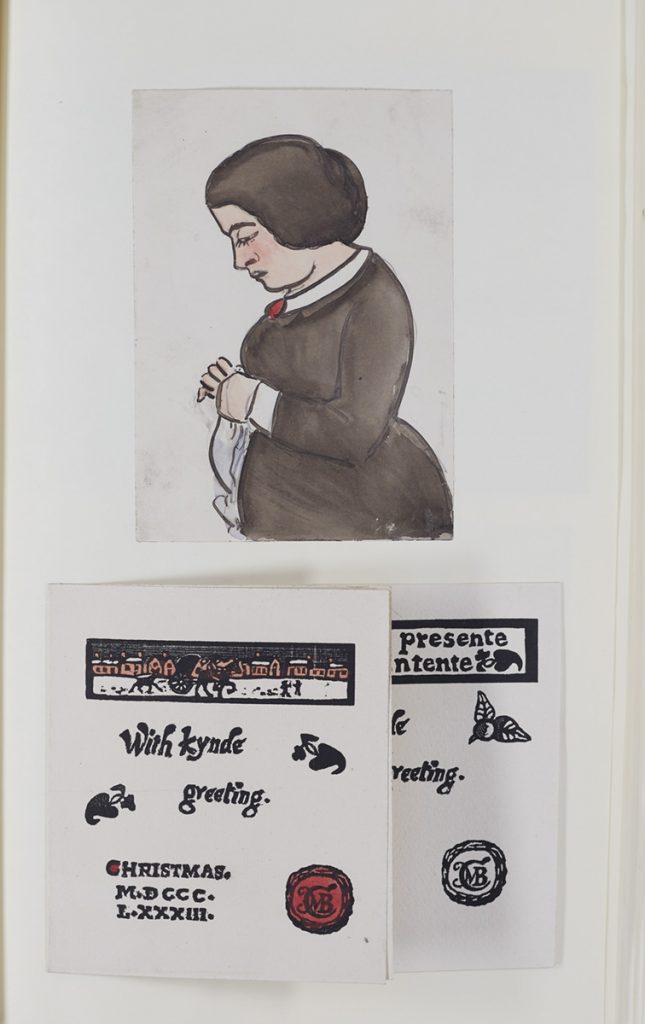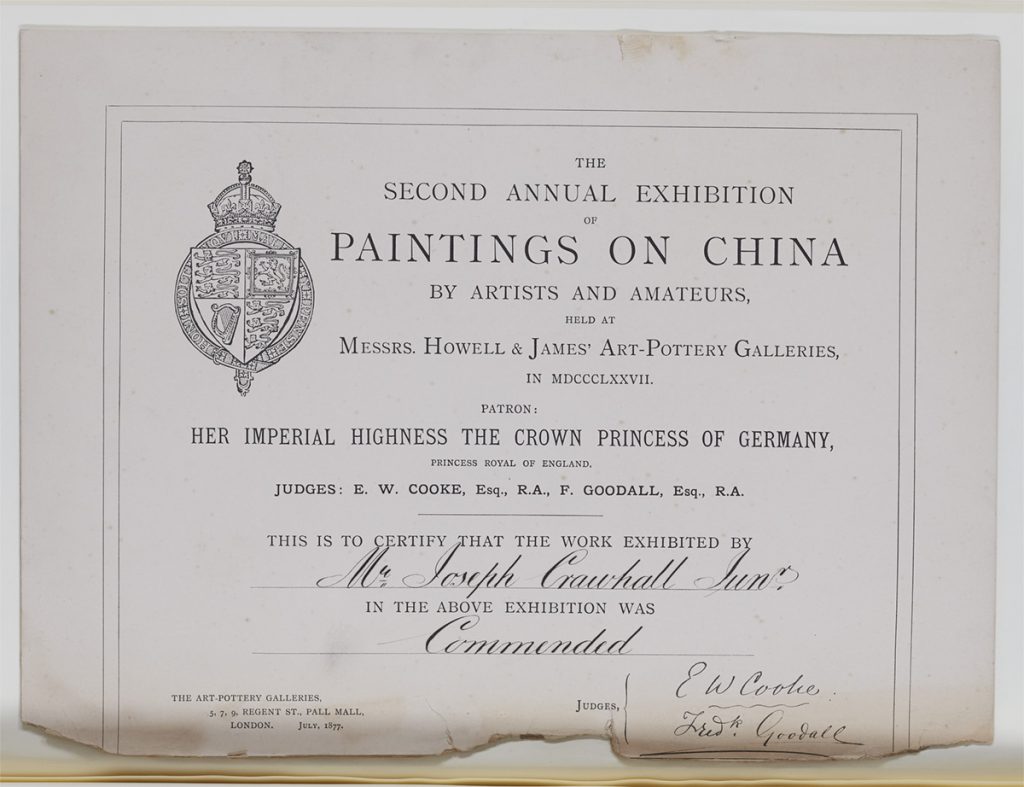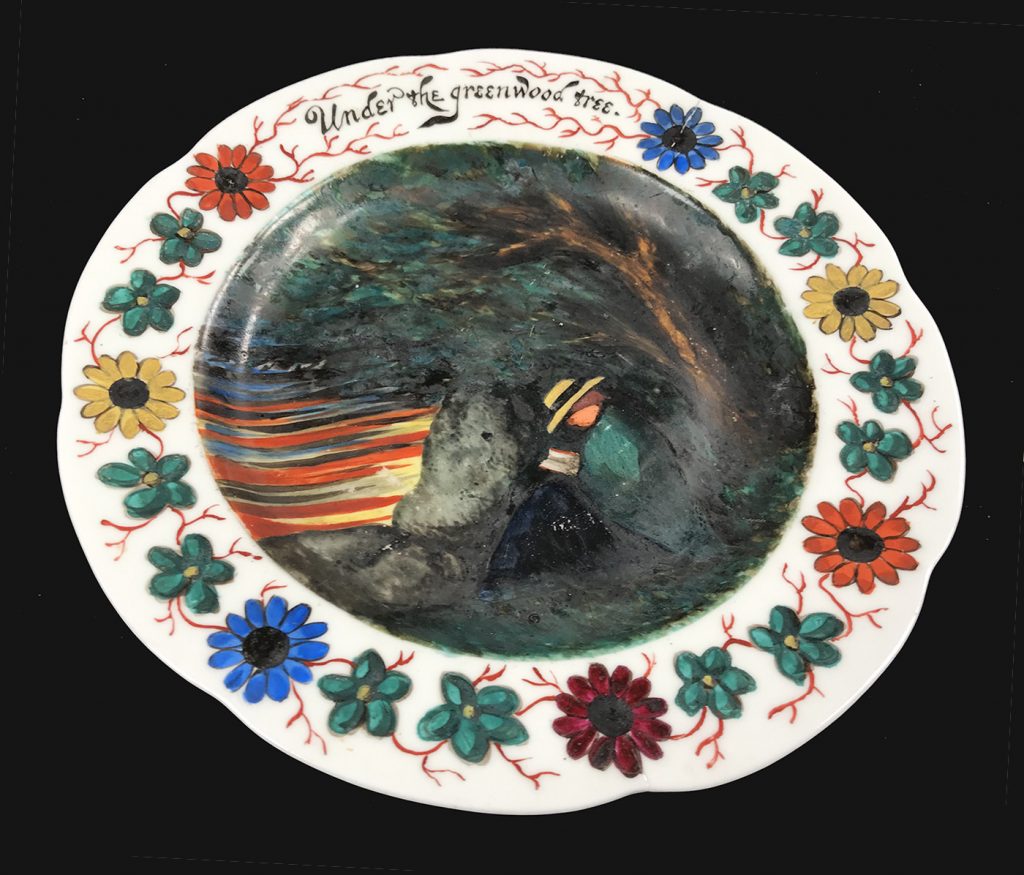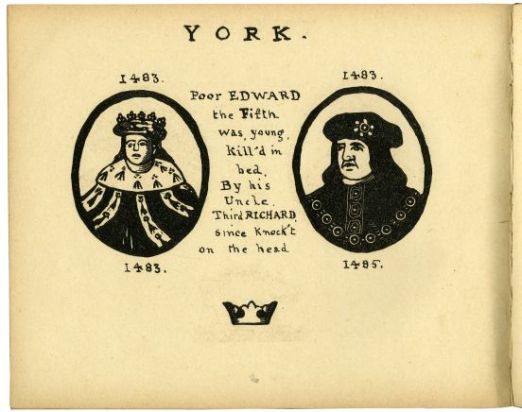In 1865-66, Joseph Crawhall II (1821-1896) set about creating a manuscript catalogue of all the Mayors and Sheriffs of Newcastle upon Tyne, as afternoon and evening recreation. He took his information from manuscripts and published records, such as Henry Bourne’s The History of Newcastle upon Tyne (1736). Crawhall’s manuscript comprises an index of names and dates, followed by chronological illustrations of the crests of those who served as Mayor and Sheriff. Some of the shields are left blank but Crawhall tells us “This M.S. is complete excepting finishing the colouring of the various shields which I reserve for my leisure”. The manuscript has been partially digitised and available on CollectionsCaptured.
Although Crawhall’s catalogue begins in 1401, with Roger Thornton (d.1430), Newcastle has had an elected mayor since 1216. In 1906, the city was awarded lord mayoralty in recognition of it being the principal town and seaport in the north of England. It wasn’t until 1956 that Newcastle had its first female Lord Mayor, Violet Hardisty Grantham (1893-1983) and it was only in 2021 that the first non-white Lord Mayor, Habib Rahman, was elected.
The title page of Crawhall’s manuscript is followed by a splendid hand-coloured coat of arms for the city. Three castles are supported by two seahorses. The castle motif has its origins in the new castle, built by order of Robert Curthose in 1080, from whence the town took its name. The seahorses serve to remind us that Newcastle is a seaport. At the top, is a lion holding the staff (flagpole) of the St. George’s pennant (flag); at the bottom, is the Latin motto which translates into ‘Triumphing by Brave Defence’. The motto was adopted during the English Civil War, after the town defended itself against the Scots in 1644.
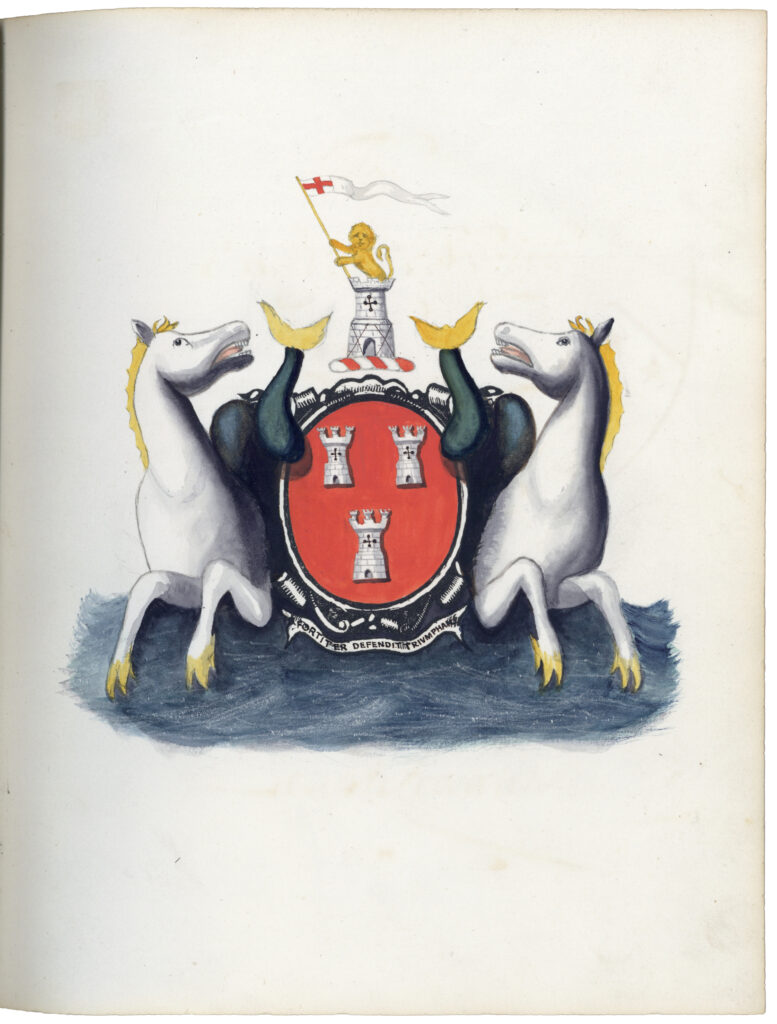
As one would expect, those who have served as Mayor have been distinguished people. Thomas Horsley (1462-c.1545) was an agricultural merchant, magistrate, and Sheriff who defended Newcastle’s mercantile interests ensuring Newcastle remained an important centre of trade in the North East and who served as Mayor in 1514, 1519, 1524-25 and 1533. Today, he is remembered as the founder of Newcastle’s oldest educational institution, the Royal Grammar School (RGS), in 1525.
Crawhall has completed Horsley’s coat of arms under his term as Sheriff in 1512. It is a red shield with three horse’s heads (bottom right shield in below image). Next to it, Crawhall has sketched a bridled horse, with the annotation “horses reined or in w”.
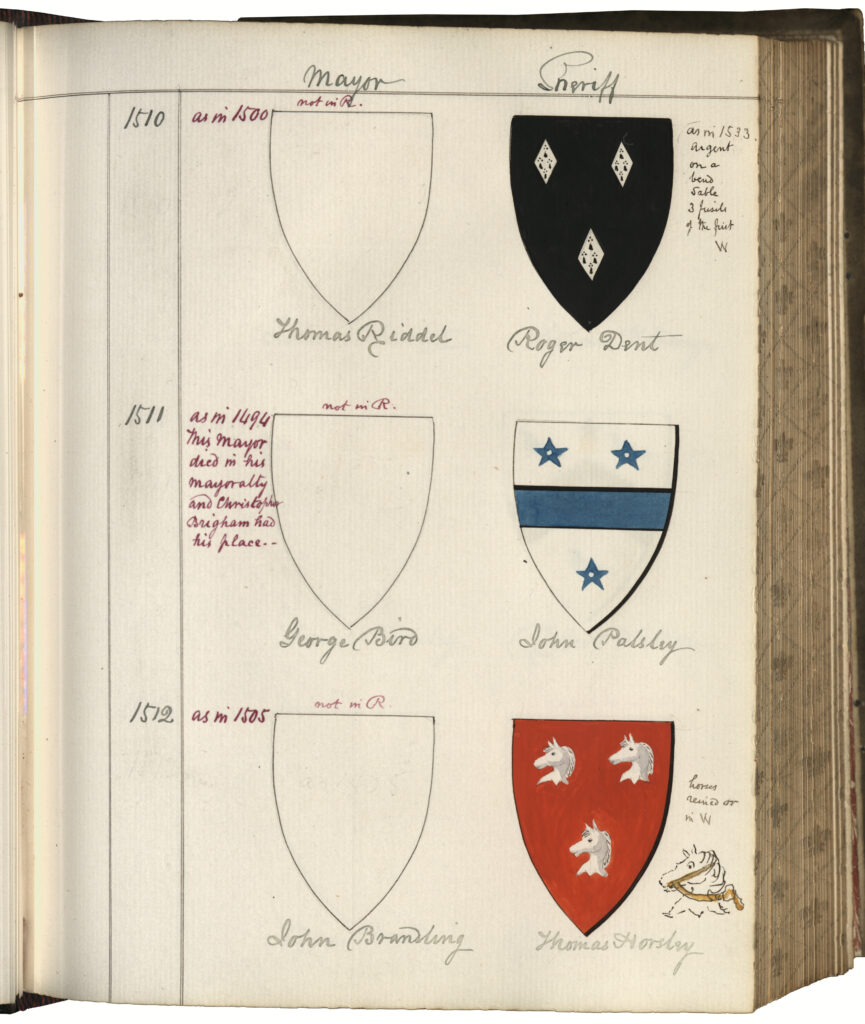
John Marlay (1590-1673) would later fall from grace and wealth but was Mayor 1642-44 and was appointed as military Governor for Newcastle by Charles I. A merchant, military commander, and politician, he held the town for seven months while it was besieged by the Scots army and fought in the streets when they stormed the town in 1644. He is also alleged to have saved the distinctive Lantern Tower of St. Nicholas’ Cathedral from destruction by ordering Scots prisoners into the tower.
Crawhall depicts the coat of arms of Sir John Marlay, knight, as a white shield with a black chevron and three black birds (top left shield in below image). He has based this on information contained in a manuscript by Ralph Waters.
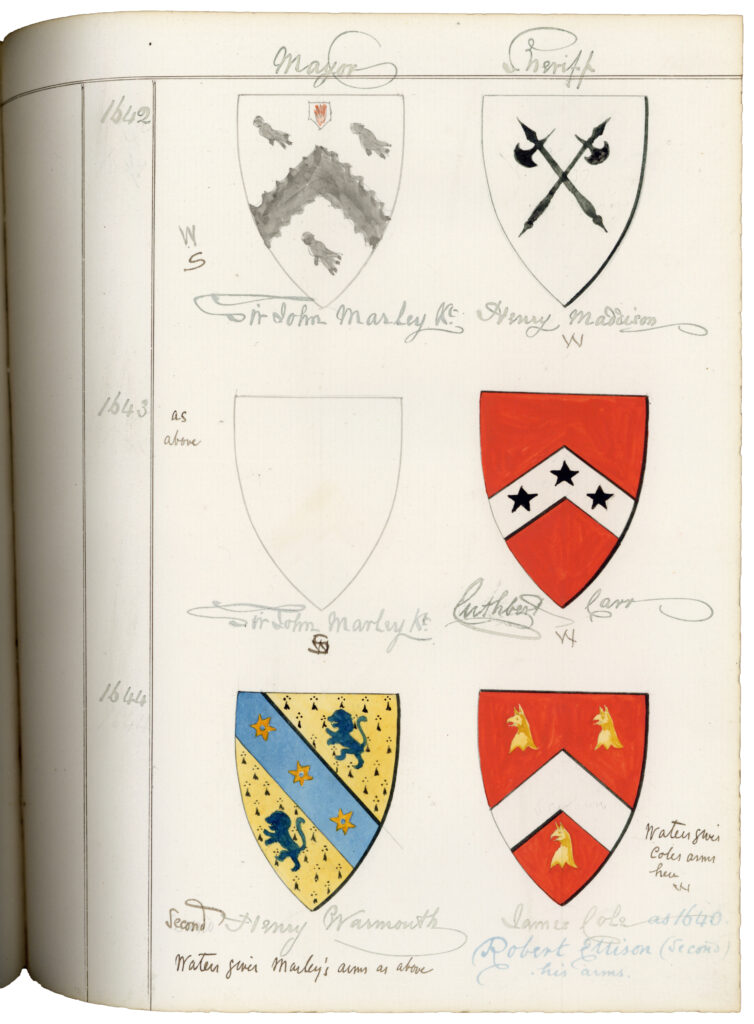
Sir Walter Calverley Blackett (1707-1777) was Mayor five times, in 1735, 1748, 1756, 1764 and 1771. He was born in Otley (Yorkshire) to Sir Walter Calverley and Julia Blackett but inherited estates from his uncle under certain conditions, which included his adoption of the Blackett coat of arms. He would later sell several of the estates and move to Cambo (Northumberland) where he improved Wallington Hall. (Upon his death, Wallington Hall passed to the Trevelyan family into which his sister had married, and Special Collections holds the papers of several generations of the Trevelyan family.)
Sir Walter was a philanthropist: he built a library; supported relief for people that found themselves unemployed by the harbour freezing; and regularly supported the Newcastle Infirmary.
It is the Blackett coat of arms that Crawhall has painted under the entry for Mayor in 1735: a white shield with a black chevron on which are arranged three shells. Three black stars are arranged above and below the chevron (top left shield in below image). Under the shield, Crawhall has written in red “Bourne ceases”, in reference to the publication of one of his aforementioned historical sources.
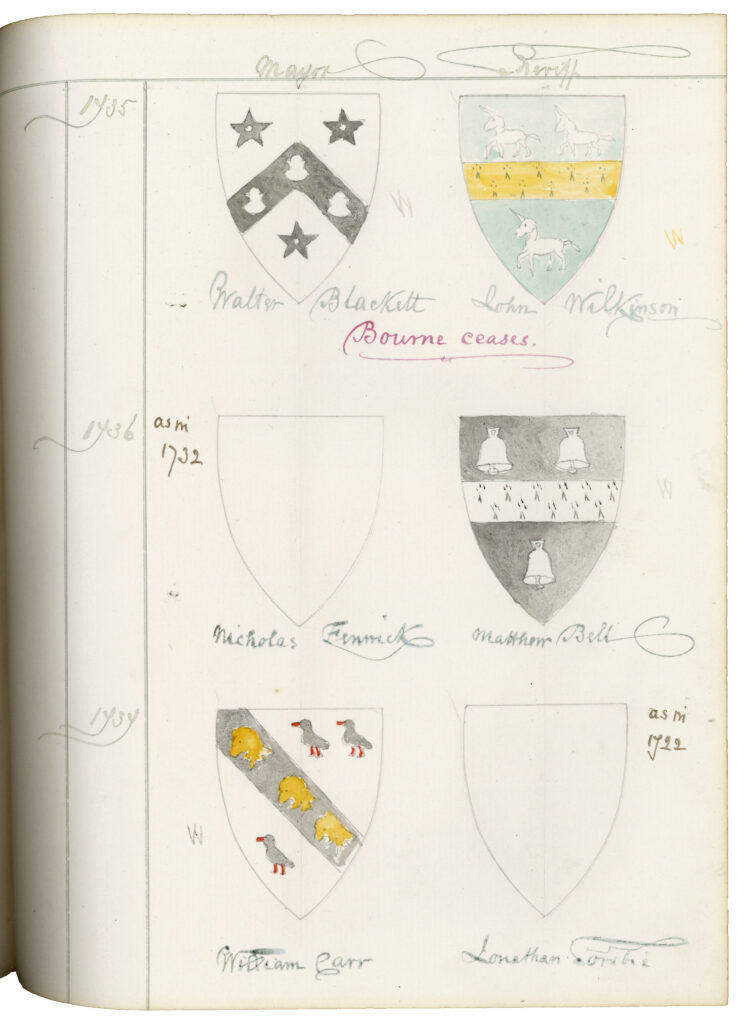
Crawhall has included his own family’s coat of arms as his father, Joseph Crawhall I (1793-1853) was Mayor in 1849-50. Crawhall I was also a magistrate, rope-maker, friend to the naturalist and wood engraver Thomas Bewick, and an artist. Unsurprisingly, Crawhall has rendered his family’s coat of arms with great care (second row, left shield in below image). The lower two thirds of the shield are red, with a stook of golden grain; the upper third is white with three crows. Above the shield, another crow is painted standing on another stook of corn. The family motto, below the shield, translates as ‘I have neither want nor care’.
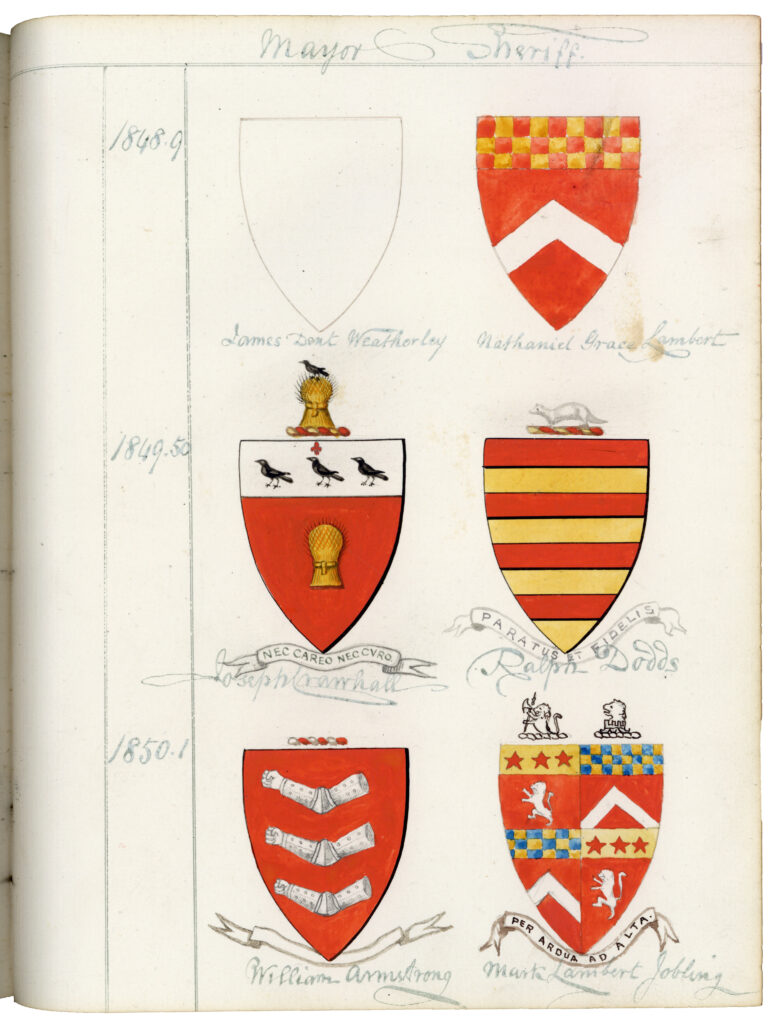
Joseph Crawhall I was succeeded as Mayor by the industrialist, engineer, and philanthropist William Armstrong (1810-1900), after whom Armstrong College (now the Armstrong Building, Newcastle University) was named.

